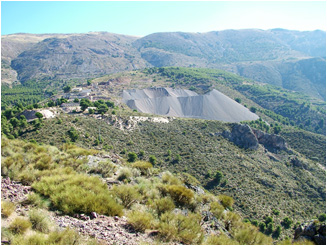Industrial
Mining Remains
Lead from the Sierra de Gádor was fundamental in the growth and development of Europe between 1820 and 1850. This was a time of complete monopoly of production on the old continent, thanks to the ease of extraction, the purity of the mineral and its proximity to the ocean for transport. It was said that the area had more lead than stones. The legacy leaves a rich historical heritage not widely known – ruins of foundries, mines, wells, barracks, bridges and roads. At the end of the 1980’s lead mining in Berja finally came to an end after hundreds, if not thousands of years of exploitation.
From the Roman mines with a technology ahead of its time to the latest foundries from the first decades of the 20th century and the more traditional ovens; from lead through iron and onto silver, the general mining industry in the area has left many important remains visible to us today. We are also left with the responsibility to protect and preserve them for future generations. It is because of this that the Department of tourism for the Berja Town Hall has been devising a series of actions to highlight and publicise the important industrial heritage the mining industry has left. These include renovating mines for tourist visits, improving accesses, rural hotels and lodgings.
Photo. Mining Remains 'Lavaderos de El Segundo' [To extend]
[To extend]
Before making any trip into the Sierra de Gádor it is important to keep in mind the nature of an old mining area. The depth and extent of the works and mines mean that any visitors must take all precautions available to them. It is highly unadvisable that visitors leave the designated pathways and routes because of the dangers that lie beyond these safe areas. If this simple and basic rule is followed at all times a visit to the area of the Sierra de Gádor can be extremely rewarding.
Hiking is one of the activities that allow visitors to view many of these mining remains.